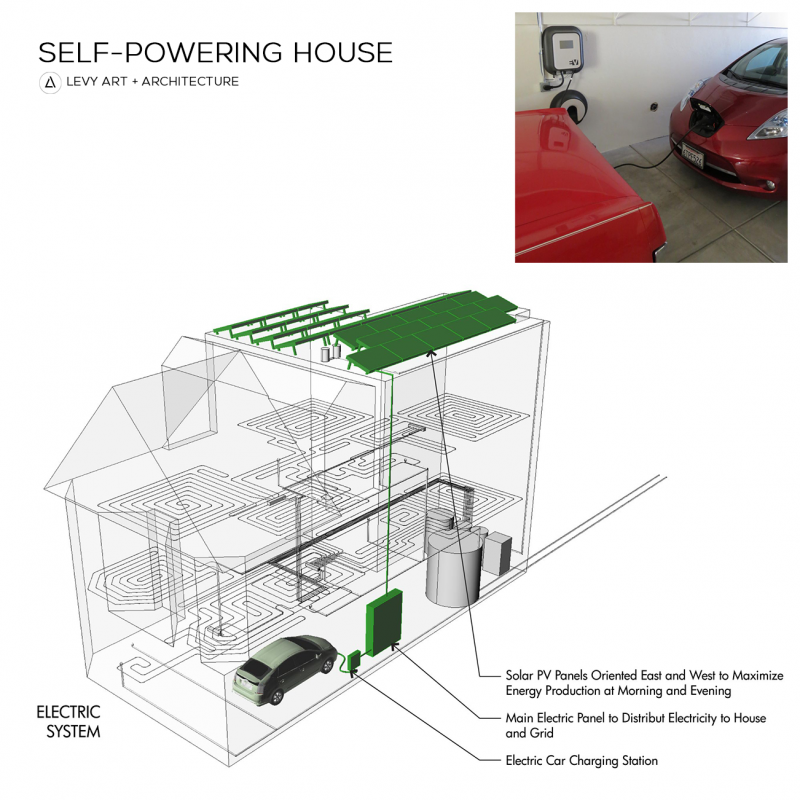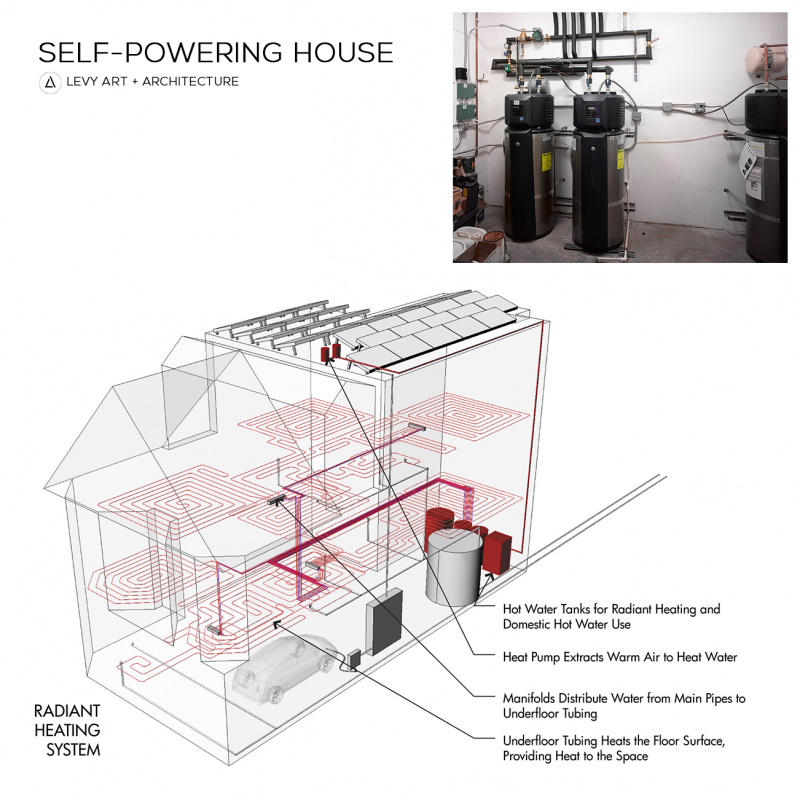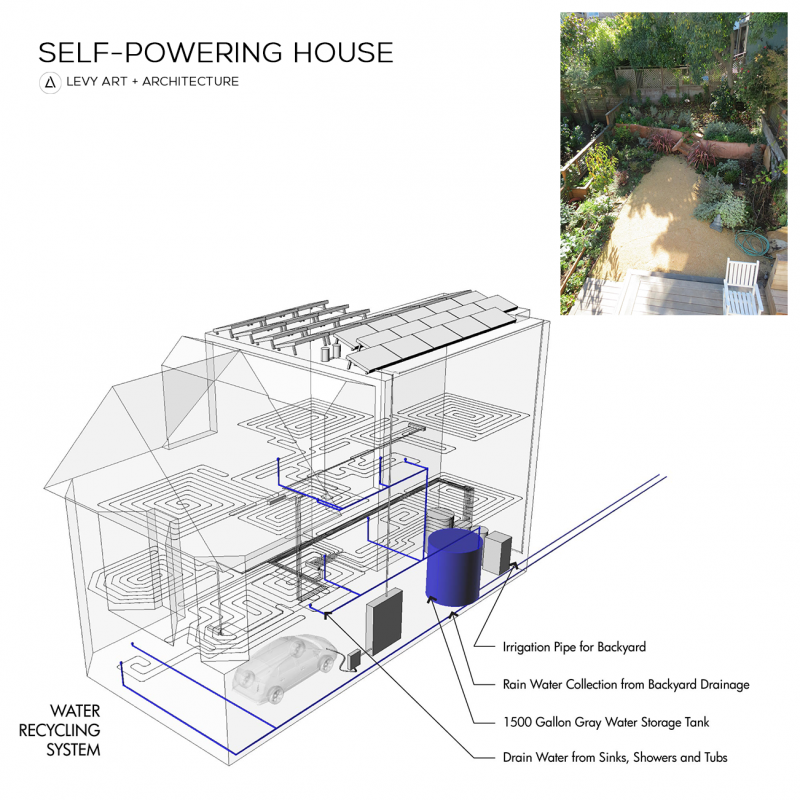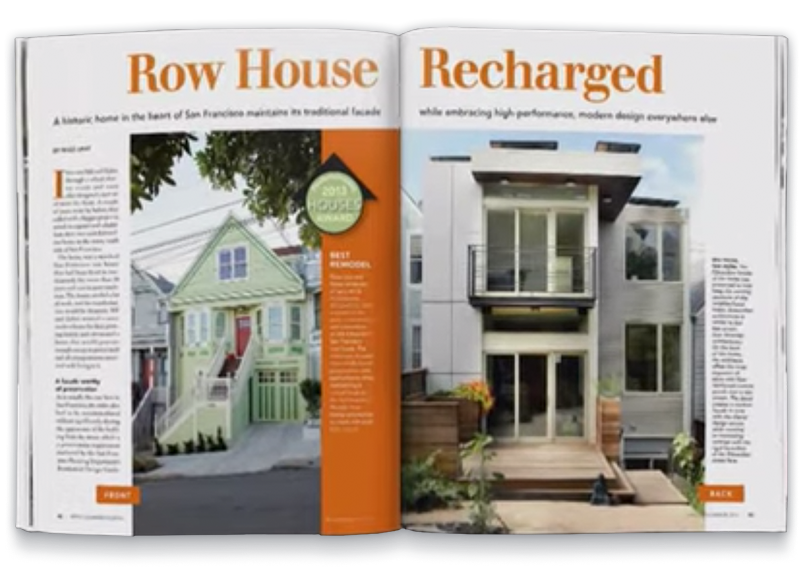Event announcement! On Saturday, October 12 in San Francisco, Levy Art + Architecture is being featured in a new series of home tours showcasing the talents of exceptional interior designers throughout North America, as part of the GRAY x MA+DS Interior Design Tour.
Come and see our Miter House on Kansas Street up close and personal, ask us questions or just enjoy the full-height frameless views of San Francisco, cozy fireplaces and unique central stairwell that mimics a sundial throughout the day.
10am – 4pm
Saturday Oct 12, 2024
Claim your $5 discount on admission for the whole tour with this link: https://www.eventbrite.com/e/the-2024-bay-area-interior-design-home-more-tour-tickets-1013709631797?discount=LEVYAA24
hashtag#interiordesigntour hashtag#incredibleinteriors hashtag#GRAY hashtag#graymagazine hashtag#welovemodern hashtag#getinspired hashtag#interiordesign
New feature in Architectural Digest
Levy Art + Architecture’s latest luxury residential project has earned a coveted spot in Architectural Digest (AD).
The collaboration between Ross Levy, client Yishai Lerner, and AD100 designer Charles de Lisle resulted in the transformation of a quaint two-story fixer-upper into a stunning contemporary residence perched atop a hill in central San Francisco, boasting breathtaking 270-degree views of the bay.
From the seamless integration of architectural details to the infusion of vibrant, Northern California-inspired elements, this project exemplifies the seamless fusion of modern aesthetics and functional elegance. Levy Art + Architecture added extra square footage, and also engineered the home’s smallest details—for instance, installing invisible air conditioning vents in the seam of the living room’s gabled ceiling, and custom-designing the winding iron staircase so it appears to be floating independently of the walls. “I’ve built software my whole life,” Yishai explains. “So I’m always thinking about the user experience.”
Notable luxury features include tall ceilings, uninterrupted planes of glass, a home office, home gym, an Alaskan cedar–lined sauna, and a Redwood hot tub, custom console in the entranceway, creamy Nordic-inspired Douglas Fir wall paneling in the TV room, Ceppo de Gre Stone in the guest suite (the very same that clads the gray facades of Milanese apartment buildings), a dark purple Blue Star kitchen range with brass details, and a custom kitchen island by furniture designer Martino Gamper.
Learn more about the architectural features and design journey of this remarkable home in the latest feature on Architectural Digest.
Read the rest of the article in Architectural Digest here…
Architecture Team: Levy Art & Architecture (Karen Andersen, Shirin Monshipouri, Andrew Sparks, Michael Ageno, Sonja Navin, Ross Levy) @levy_aa
Stair Fabricator: Melissa MacDonald
Furniture Maker: Martino Gamper @martinogamper
Interior Design: Charles Delisle @charlesdelisleoffice
Contractor: Blair Burke GC
Site Superintendent: Brad Lord
Project Manager: Nicole Barsetti
Structural Engineer: Daedalus Engineering @daedalusstructuralengineering
Clients: Yishai and Sabrina Lerner
Phototographers: Eric Petschek @ericpetschek and Karen Andersen @almost.elfish
Guide to Architecture Terms – Part 2
Welcome to Part 2 of our comprehensive guide to architecture terms, where we delve into the essential elements that shape the design and construction of your dream home or commercial structure. Let’s explore the exciting world of architecture together and empower you with knowledge to make informed decisions throughout your project.
In our previous post, we provided a quick primer on common architectural terms. Now, we’re expanding the list to guide you through the decision-making process during the design, planning, and building stages of your new architecture project.
Site work
Prepare the canvas for your architectural masterpiece with careful site work considerations. This step ensures that your land is ready to be built upon, and all necessary utilities are installed, before construction begins. It includes tasks such as clearing and leveling the site, and installing utilities like water, gas, and electricity, as well as consideration of how you’ll access your site i.e. what the approach is like. If merited, the architect will additionally coordinate with a landscape architect. Every aspect of your property will be strategically planned to create a harmonious and functional environment.
- Tree protection
- Irrigation
- Well location
- Propane tanks or other fuel storage
- Underground power feed
- Solar installation and inverters
- Fire protection tanks, stand-pipe and site locations
- Septic fields and redundant field areas
- Driveway layout and material
- Terraces and decks
- Landscape
- Exterior lighting
Foundation
Here, we lay the groundwork for a solid and stable home or commercial space. This is the base of your building that supports the weight of the structure. Our architects will guide you through the choices that determine the strength and durability of your foundation, ensuring a secure base for your architectural vision, and preventing problems later on like settling or cracking. We will make recommendations based on a geo-technical investigation of your precise location, followed by a structural engineering recommendation. Again, the architect acts as a master coordinator between all parties.
- Soil study
- Drilled piers or spread footings
- Slab
- Raised floor over crawl space
- Retaining walls
Framing
Design and construction of the frame of the house, including decisions about the type of materials used, such as FSC certified wood, engineered lumber, or all-steel. It’s important to coordinate this, because all of the other systems will fit into it. Your architect will ensure that there is ample room for these other systems, avoiding conflicts during construction.
- Forest Stewardship Council (FSC)-certified wood
- Engineered lumber, TJI, LVL, parallam
- Hybrid: steel, with wood for large open expanses
- All-steel
Insulation
This is what keeps your house comfortable and reduces your energy bills. The most advanced example is called a “passive house” that retains heat from human activity and sunshine and employs virtually no mechanical space-conditioning systems.
- Rock wool exterior
- Fiberglass (incl. non-formaldehyde options)
- Cotton batt
- Cellulose
- Spray foam (open and closed cell)
Siding and exterior surfaces
Exterior finish determines not only the look of the house, but also the durability and maintenance requirements. Your architect can help guide the selection, including considerations such as code requirements for wildfire resistance.
- Siding vs rainscreen
- Natural wood, stain and maintenance considerations per Wildland Urban Interface (WUI)
- Engineered siding and rainscreen (i.e. parklex resin and bamboo strand)
- Fiber-reinforced concrete
- Stucco and lime plaster
Electrical and smart home
An electrical plan in many ways determines how you’ll use your home. Oftentimes, we work in coordination with a lighting designer to develop a plan that will allow for different moods and uses, with simple & integrated control systems.
- Shade pockets-recessed roller blinds
- Lighting controls
- Integrated AV systems
- Security
Roofing material
For houses with shaped roof, the roof is a major architectural feature and determines much of the visual style. Your architect will help guide you in the selection process for both aesthetic and functional reasons including long-term wear and code requirements.
- Code requirements for fire rating
- Asphalt shingle
- Slate shingle
- Tile (terracotta and glazed)
- Steel (standing seam or horizontal lap patterns)
Flooring
This is the single largest surface area in the home. In addition to being a large visual component, many times heating and other systems are integrated into the flooring. Your architect can help you determine which material is appropriate for each living space, and then make a selection within that range.
- Full-dimension hardwood
- Engineered hardwood
- Tile (porcelain and ceramic options, large format)
- Polished concrete, terrazzo
- Natural stone
- Cork and related (marmoleum)
- Sound control, (underlayments, ceiling separations, double wall details)
Wall surfaces
Walls, textures, and ultimately colors help shape the experience of a space. Sense of space is more than just shape – it is defined by material. Materials can be used to highlight special architectural features, contribute to the ambiance of a room, and create continuity throughout the house. This is an area where an architect helps you to create a personalized expression of your home.
- Sheetrock (texture and level of finish 3-5 for smoothness)
- Lime washes
- Plaster
- Stone/ brick veneer
- Paneling (natural, book matched, painted, stained)
Cabinetry
In addition to the functional components, cabinetry is an element where design & material expression can be introduced on a very refined level. This is where you will come into physical contact with your home, and you will appreciate the fine level of craftsmanship and detail that an architect can provide.
- Wood or laminate
- Drawer and box construction (dowel and peg, dovetail…) formed steel, wood,
- Manufactured or custom
- Wood grain or paint/
Tile and stone
With a large array of natural and man-made materials, we guide our clients in selecting the best products for your lifestyle and the style of your home. Every selection has its own benefits, applications, and limitations. An experienced architect will help you choose not only based on appearance, but help you make selections that will have a long lifespan.
- Ceramic vs, porcelain options appropriate locations, installation techniques)
- Stone style and wear potential, porosity,patina, maintenance
Bath details
Bathrooms are becoming more and more spa-like. They are the places we go to relax and unwind. An architect will help you find the space and function for this most intimate portion of the home.
- Number of fixtures (3-6)
- Shower bath combo
- Wet room
- Free standing tub
- Bidet/ bidet-wc combo
- Number of vanities
- Curbless shower, linear drain
- Make up area(s)
Closets
Closets can run the gamut from simple storage to wardrobe display. Their appointments are another area where a custom home can be much more tailored than an ordinary house.
- Walk-in vs, in room (space and flow)
- Basic pole and shelf
- Added fit out, drawers, wardrobes, specialty systems
- Dressing area, mirror location
Doors
There is a lot of style embedded in the door selection, including the casings and surrounds. The front door, especially, is a signature piece in almost every home. There are also functional choices to be made; for example, door selection can create additional levels of privacy within the house. Your architect will guide you to define a door style that is both functional and complements the overall aesthetic of the home.
- Style (flat panel vs. detailed, painted vs. wood grain)
- Baseboard and casings
- Hardware and fixtures, (stops)
If you’re ready to delve deeper into the world of architecture terms and gain access to the complete guide, we invite you to head over to this page to download the printable PDF. Additionally, if you’re embarking on a custom residential or commercial project, we’re here to support you every step of the way. Schedule your complimentary 20-minute consultation to have your questions answered, regardless of the phase your project is in.
Together, let’s create a beautiful, functional, and sustainable building that perfectly aligns with your unique vision and requirements.
About Levy Art + Architecture
Ross Levy, licensed architect and principal at Levy Art + Architecture, has been creating environmentally-conscious designs that support modern lifestyles for nearly 30 years. With his background as a building contractor, he brings a craftsman’s perspective and attention to detail to every unique project. Ross completed graduate work at Harvard University’s Graduate School of Design, is a founding member of The Viet Nam Green Building Council, and has served for many years on the AIA Public Policy committee.
Levy Art + Architecture’s work has been recognized by the American Institute of Architects and featured in publications such as Architectural Digest, SPACES, Dwell, Dezeen, and Fine Homebuilding.
Energizing architecture: how to build your self-powering dream home
Is your custom home one that you can live in comfortably and feel good about?
In 2010, we completed construction of the first completely self-powering house in San Francisco. That’s right: 100% energy neutral.
Today, more than a decade later, we wish that all homes would be built this way.
Here’s how we did it, and what you can do to improve your own project in a move toward a net-zero (or better!) future.
1) START WITH SOLAR
An eight-kilowatt solar array, grid-connected and net-metered, produces all power necessary for domestic and transportation purposes without any on-site carbon emissions. The owner, who had been working in the solar industry for over twenty years at the time of construction, was committed to “getting off the pipe” …as in: a house without a gas meter.
2) ALIGN WITH THE SUN
The self-powering home design includes a structure with ample roof area for the panels and a highly-efficient envelope. The floor plan sees open living spaces at the rear of the house, directly adjacent to the garden. These rooms employ ample, south-facing glazing for maximum solar gain.
3) USE PASSIVE RADIANT HEATING
On mild days, exposed concrete floors with radiant tubes convey passively-collected heat to the north-facing portions of the house via a small recirculating pump. We specified Marvin wood windows with High-R-Tripane glazing and sprayed, Biobase, soy foam insulation for R-19 walls and an R-40 roof. This creates a tight enclosure while also accounting for existing, historic “blind walls” and the inherent problems with air and moisture infiltration that they present.
A three-story stairwell topped with operable skylights is a dramatic vertical space and creates a heat stack, providing all cooling necessary for the moderate San Francisco climate.
The mechanical systems are based on the “all electric” concept. In the active heating mode, a 2/3 ton electric heat pump provides hot water for the floor system. A second heat pump provides domestic hot water for showers, laundry etc.
4) CHOOSE SMART FIXTURES & APPLIANCES
LED fixtures and high-efficiency appliances lower the total electrical load, while a plug-in hybrid charges in off-hours to balance production and consumption cycles with the net metering approach.
5) RECLAIM WATER
A gray water reclamation system provides irrigation for a shared backyard vegetable garden and for drought-tolerant landscape features – both at the yard and the street.
GOING FURTHER
This self-powering home project was cutting edge a decade ago. It represents more than a “green” structure. We work at the level of lifestyle: considering transportation, food production and community in this urban setting in a holistic approach while also serving the specific needs and desires of the homeowner.
Being able to “divorce” the local power company and lower your utility bills is a nice perk, of course.
But being environmentally sustainable is just the beginning; this is now our status quo.
Our latest thoughts on the sustainability may be found in our manifesto about modern architecture.
We are designing the future of buildings that not only maintain, but also give back to the environment.
If this resonates with you, let’s talk: book a 20min consultation to talk about the dreams and aspirations you have for your project.
About this Project
Principal Architect: Ross Levy, Levy Art + Architecture
Architecture Design Team: Karen Andersen and Michael Ageno, Levy Art + Architecture
Structural Engineer: Shaun Monyihan, SEMCO
Mechanical Engineer: Bill Dakin, Davis Energy Group
This project was Fine Homebuilding’s “Remodel of the Year” in 2013 and also appeared in the April 2013 print edition of San Francisco magazine in “Nothing Never Looked so Good” by Joanne Furio and Lauren Murrow.
About Levy Art + Architecture
Levy Art + Architecture firm is an interdisciplinary studio operating at the intersection of architecture, environmentalism and art. Our work is inspired by a commitment to research and sustainability as a basis for the design process. The knowledge derived from this study is embodied in form, structure and light. It defines spaces that transform our daily experience and influence the way we live in urban and natural environments.
“Hermitage Russian Hill” featured in Modern Luxury Magazine
Levy Art + Architecture’s recently-completed luxury residential design was featured in the nation’s largest luxury media outlet.
Sky High
by MAILE PINGEL, PHOTOGRAPHS BY CHRISTOPHER STARK
A trio of talents breathe new life into a dated condo atop San Francisco’s Russian Hill.
“This is a one-of-a-kind apartment, but it was a bit of an unorthodox approach for me,” says San Francisco interior designer Eche Martinez of the Russian Hill condominium he recently completed with architect Ross Levy and fellow designer Cindy Bayon. “I got to come in after the dusty part of the project and bring it to life,” he says. The condo, located in a landmark building, was nearing the end of its two-year renovation by Levy and Bayon when the owners, newlyweds, brought in Martinez, whom the wife had met through a mutual friend, to take the project across the finish line. “Cindy and Ross did an incredible job of layering natural materials and beautiful finishes for an eclectic, quirky Bay Area aesthetic, and it was an impeccable job by the builder, Justine Sears,” he explains. “My role was really more of an art director.”
“It’s a modern space within a traditional setting,” explains Levy, a longtime friend of the husband. The original floor plan was a series of formal rooms, so the architect opened the space to create a contemporary flow that would also establish a gallery-like setting for the couple’s art collection. Working with project architect Patrick Donato, Levy rearranged the entry sequence to take advantage of spectacular downtown and Bay Bridge views. Original doors and windows couldn’t be changed, so they were painted white to disappear into the walls. Likening the condo’s new flow of rooms to a renovated historic Italian palazzo, Levy then added subtle definition to the great room by creating varying ceiling designs over the living, dining and family room areas.
Read the rest of the article in Modern Luxury Magazine here…
Architecture: Levy Art & Architecture (Patrick Donato and Ross Levy) (@levy_aa)
Contractor: Moroso Construction (Justine Sears)
Interior Designers: Cindy Bayon & Eche Martinez
Photographer: Christopher Stark (@christopherstark)
Levy Art + Architecture’s “Great Highway” Featured in Dwell
We overhauled a Marina-style house on Ocean Beach, allowing our client to keep an eye on the surf in the Pacific Ocean. The editors at Dwell wrote the following feature about the project:
A SURFER’S SAN FRANCISCO HOME HELPS KEEP AN EYE ON THE WAVES
Words by MELISSA DALTON, Photographs by JOE FLETCHER for Dwell (read the original here)
If you’ve walked around San Francisco, chances are you’ve passed a Marina-style house. After all, the style originated in the city’s Marina District. “They were simple houses: one story over a garage,” says architect Ross Levy, who overhauled a specimen on Ocean Beach last year.
Although the house faces the Pacific Ocean, much of its outlook was compromised by poor window placement and an ad-hoc addition. “Sometime in the ’60s, someone plunked a third floor on top of the house, and they really did plunk it down,” says Levy. “It was like someone airlifted some plywood and nailed it together. And then you had a third floor.”
This meant that the resulting interior floor plan was “strangely arranged” and not conducive for the home’s most recent owner, a passionate surfer drawn to its proximity to the water. Levy sums up the client’s brief: “See the waves from wherever you are. That was the program.”
The home’s existing layout clustered the living spaces on the second floor— there, the front door opened into the living room, and the staircase was crammed into a narrow passage. The bedrooms were then spread between the two floors, and there was an ocean-facing deck at the third level, but the view on one side was blocked by the house.
For the remodel, the team flipped the floor plan, relocating the communal spaces to a gently expanded third floor. Dubbed the “lookout,” that level is now filled with natural light and has an enviable vantage point of the water. The designers reduced the number of bedrooms to three and grouped them all together on the second floor.
As the architects started cataloging the available space during the preliminary design phase, they made a happy discovery: “There was this cavity between the second and third floors in the building that we didn’t fully understand until we started measuring and tearing stuff apart,” says Levy. “That gave us all kinds of design opportunities that we hadn’t really counted on.”
The team anchored the new design with a bold, sculptural staircase treatment, wherein the open oak tread appears suspended on a screen of steel rods. The delicate treatment allows light to flow down from the top floor. “One of the perennial problems with the reverse floor plan remodel is, how do you get the people from the bottom to the top?” says Levy. “So, we made this floating, rod-suspended stair to be as light as air, and to really draw your eyes straight up.”
Now, the home is more in sync with its surroundings—and even better, the homeowner’s lifestyle. Although the family only moved 20 minutes away from their last home in Bernal Heights, being this much closer to the water makes all the difference when taking advantage of good conditions. “For surfers, they can look at the surf report and [check the] cameras online,” says Levy, “but there’s a lot to be said for being there.”
Architecture: Levy Art & Architecture (Melissa Todd, Shirin Monshipouri, and Ross Levy) (@levy_aa)
Builder: BBGC, Blair Burke General Contractor
Structural Engineer: FTF Engineering
Lighting Design: Levy Art & Architecture
Interior Design: Levy Art & Architecture (Frances Weiss)
Cabinetry Design/Installation: Eckhoff Furniture Manufacturing
Permit Consulting: Quickdraw
Metal: Local Metal
Opening Night Feast Feb 27th: “Consider the Oyster” while Snacking on Oysters
Join us for a feast of culinary and visual delights! Live oysters from Tomales Bay Oyster Company will be served at this special opening night reception. Social distance and safety protocols will be enforced.
Saturday, February 27th beginning at dusk ~5pm PST
Outside of 2501 Bryant Street, San Francisco, rain or shine
Join us as we consider pinhole cameras inside oyster shells, native oyster restoration at the Presidio and oyster farming and feasting in Tomales Bay.
Healthy oyster reefs are a proven way to effectively reduce water pollution and improve the marine environment. While other bivalves also possess the ingenious ability to clean water while flushing out pollutants as they feed, none are simultaneous symbols of feasting, as is the oyster.
Gwendolyn Meyer
Participating artists and scientists:
- Oyster reef panels designed by architecture faculty MARGARET IKEDA & EVAN JONES at California College of the Arts (CCA) provided by JONATHON YOUNG, wildlife ecologist at the Presidio
- Oyster shell pinhole cameras by DAVID JANESKO
- Two-channel video installation “Consider the Oyster” about Drake’s Bay Oyster company by CHRIS KALLMYER
- Video “Heard Above” filmed at Quartermaster Reach by TAYLOR GRIFFITH
- Photos from “Oyster Culture” a beautiful book about the rich intersection between oyster farming and culinary culture in the unique region of West Marin by GWENDOLYN MEYER
Natural Discourse, curated by Shirley Alexandra Watts, is again collaborating with Levy Art + Architecture to consider this wondrous bi-valve in a street-front exhibit that will be visible from the street where anyone can view it, 24 hours a day for 8 weeks (best viewed at dusk) at 2501 BRYANT STREET, SAN FRANCISCO.
Press Release: Natural Discourse & Levy Art + Architecture present “Consider the Oyster: Art, Science & Culture”
A Storefront Art Exhibit Opens February 27, 2021, 6 pm to 9 pm outside 2501 Bryant St, Rain or Shine
Join us as we consider pinhole cameras inside oyster shells, native oyster restoration at the Presidio and oyster farming and feasting in Tomales Bay. Participating artists and scientists: Taylor Griffith, David Janesko, Margaret Ikeda and Evan Jones, Chris Kallmyer, Gwendolyn Meyer and Jonathan Young.
David Janesko’s poetic series Forest/Oyster was the initial inspiration for the exhibit. Delicate images of the forest surrounding the Willapa Bay in Oregon are imprinted on the inside of the shells. Jonathon Young, wildlife ecologist at the Presidio, provided us with concrete oyster reef balls and computer-designed oyster panels by architecture faculty Margaret Ikeda and Evan Jones of Architectural Ecologies Lab. These objects are part of a native oyster restoration project at the new Quartermaster Reach tidal wetland at the Presidio. Taylor Griffith’s Heard Above, a 19 minute video was filmed at Quartermaster Reach and will be projected every weekend from dusk to 9 pm. From ecology to oyster farming and culinary delights, Chris Kallmyer will be showing Consider the Oyster a 2 channel video about the last year of the Drake’s Bay Oyster company and a series of Gwendolyn Meyer’s photos from her beautiful book Oyster Culture.
Healthy oyster reefs are a proven way to effectively reduce water pollution and improve the marine environment. While other bivalves also possess the ingenious ability to clean water while flushing out pollutants as they feed, none are simultaneous symbols of feasting, as is the oyster.
Gwendolyn Meyer
Natural Discourse is collaborating with Levy Art + Architecture to consider this wondrous bi-valve.
Natural Discourse is an ongoing series of symposia, publications and site-specific art installations that explores the connections between art, culture, science and site. Founded in 2012 by Shirley Alexandra Watts, a landscape artist, architect and contractor with extensive experience curating, managing and installing public art exhibitions. Projects include the University of California Botanical Garden at Berkeley, Los Angeles County Arboretum and Botanic Garden, and Sagehen Creek Field Station. Natural Discourse has been awarded grants from Los Angeles County Arts Commission, the Pasadena Art Alliance and the National Endowment for the Arts. naturaldiscourse.org
Levy Art & Architecture is an interdisciplinary studio that functions at the intersection of architecture, environmentalism and art. A full-service design firm founded by Ross Levy with specialties in sustainability and construction, it is also an experimental art space. Exhibits typically concern larger issues from social to environmental. The architecture and art mutually inform one another.
Together, these two teams have been working on a series of environmentally-focused art productions in galleries in and around California.
Live oysters will be served! Social distance and safety protocols will be enforced.
Natural Discourse presents “Consider the Oyster”
Rendering by Art Zendarski
Following the recent reestablishment of seven acres of tidal marshland connected to San Francisco Bay, natural habitat is recreated, and native species — particularly oysters — are able to return to their homes.
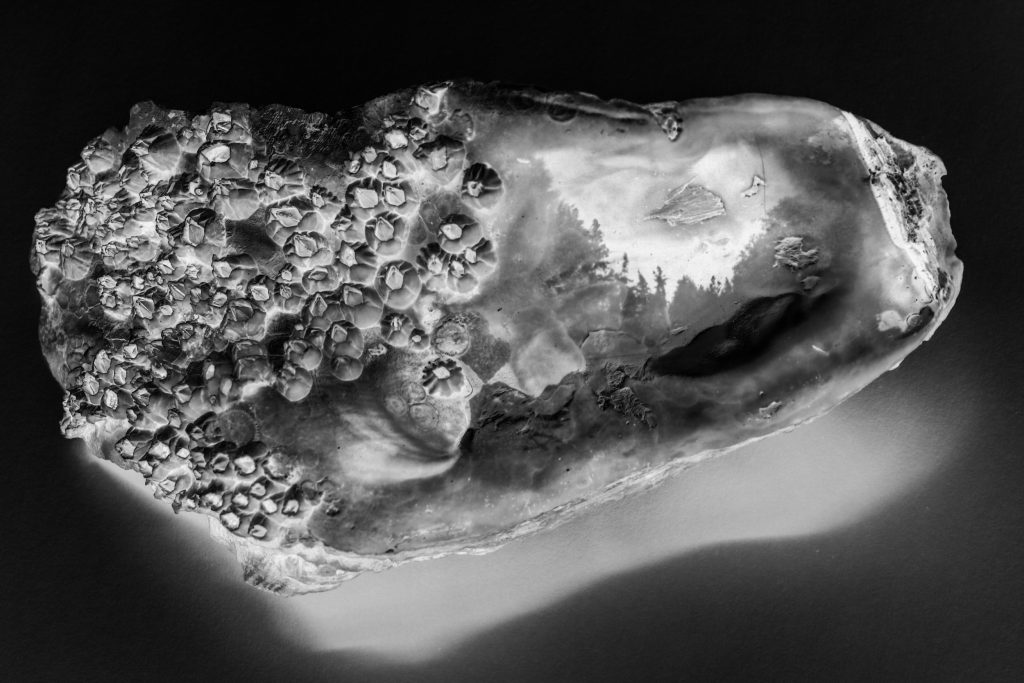
Working in conjunction with the Presidio Trust and Natural Discourse, Levy Art + Architecture is proud to announce our upcoming art exhibit, “Consider the Oyster: Art, Science & Culture.”
Join us as we consider forests as viewed through oyster shell pinhole cameras, native oyster restoration at the Presidio and oyster farming and feasting in Tomales Bay. Participating artists and scientists: Margaret Ikeda and Evan Jones, Taylor Griffith, David Janesko, Gwendolyn Meyer and Jonathan Young, and Chris Kallmyer.
The art and gallery will be visible from the street where anyone can view it, 24 hours a day, beginning Saturday, February 27th at Levy Art + Architecture 2401 Bryant St, San Francisco.
RSVP for the opening night outdoor reception on LinkedIn.
About the Quartermaster Reach Project
In December 2020, the Presidio Trust unveiled to visitors seven acres of re-established tidal marshland and a new pedestrian trail near San Francisco Bay.
The site is known as Quartermaster Reach, named for the U.S. Army’s Quartermaster Corps, which operated in the area when the Presidio was a military post. The project transforms a formerly paved construction site under the “Presidio Parkway” approach to the Golden Gate Bridge into a beautiful new wetland ecosystem. Creeks now flow above ground along the Presidio’s largest watershed known as Tennessee Hollow to San Francisco Bay through Crissy Marsh, improving the biodiversity of the Presidio. The shallow tidal estuary is the natural habitat for oysters that were once prolific in the San Francisco Bay.
Quartermaster Reach is a huge milestone in the 20-year effort of the Presidio Trust, the Golden Gate National Parks Conservancy, and the National Park Service to restore the park’s largest watershed. The site will allow visitors to enjoy an intimate experience of nature just minutes from downtown.
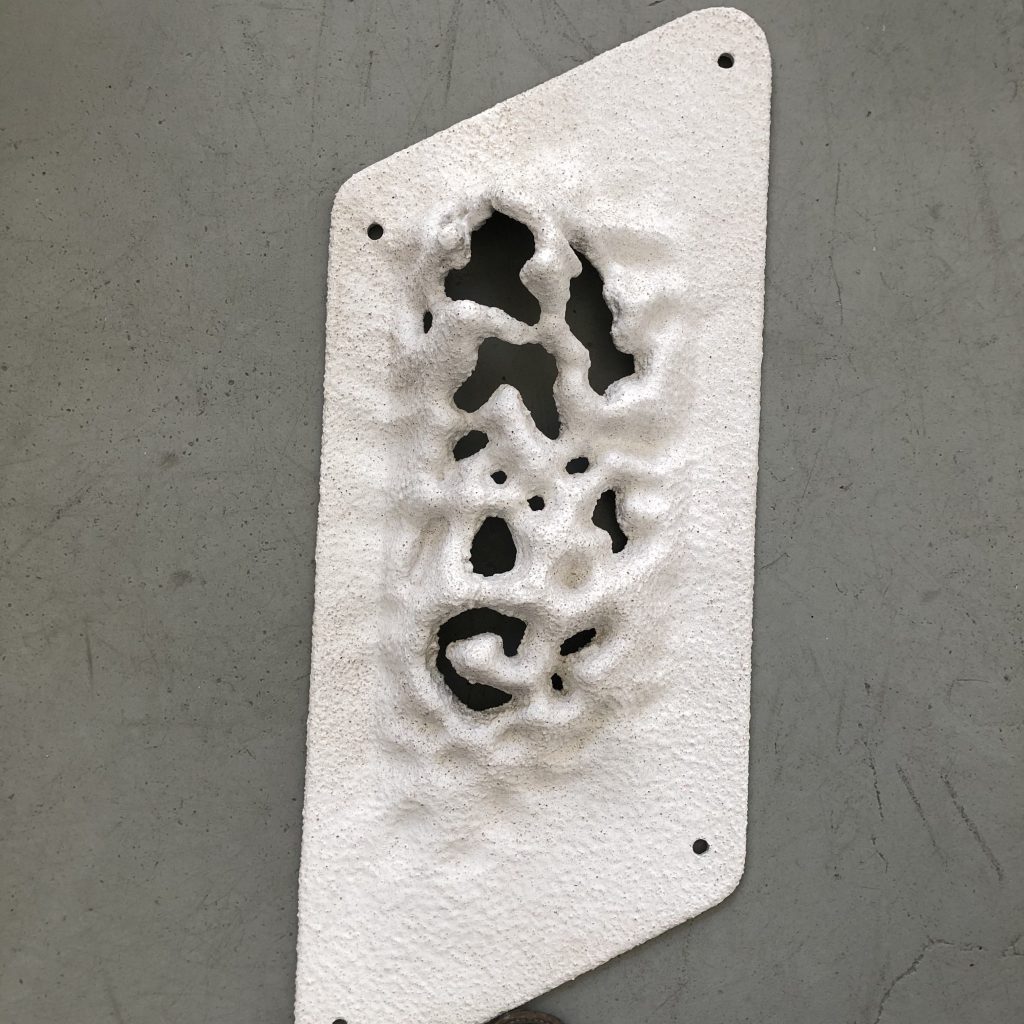
Featured Art: Oyster Habitats Designed by Architecture Faculty Margaret Ikeda & Evan Jones at California College of the Arts (CCA)
Another area where art + architecture meet with environmentalism are the parametric 3-dimensional oyster substrates designed and fabricated in the Architectural Ecologies Lab at CCA. These are designed to provide a habitat for oyster growth at the newly-opened Quartermaster Reach.
Featured Art: Oyster Shell Pinhole Cameras by David Janesko
David’s pinhole cameras are constructed from nature, in order to photograph nature. He turned Pacific Oyster shells into pinhole cameras that captured images of their forest surroundings. Read more about the project as featured on Smithsonian Magazine. See more photos of these incredible oysters-turned-photograph on David’s website.
Featured Art: Consider the Oyster by Chris Kallmyer
A two-channel video documenting place, culture, and a window into oyster farming in West Marin. It is based off of three basic facts:
- Oysters reflect the place in which they are made. This recording documents the process of farming oysters with field recordings and two-channel video.
- Oysters are equally, a grounded and celestial food: flavored by the tides, created by the rotation of the sun and moon. They put us in touch with our own position in relation to movement of our planet. Two drones are sounded to represent the sun and the moon, proportional to their gravitational pull on the tidal waters.
- Oysters are bivalves, and so is a pump organ. Chris performs on a pump organ throughout the piece as a musical analogue for our beloved oyster.
About the Partnership for the Presidio
The Partnership for the Presidio works to sustain the Presidio’s natural beauty, preserve its history, maintain its funding, and create inspiring national park experiences for visitors. Two federal agencies manage the Presidio jointly: the Presidio Trust and the National Park Service, with support from their non-profit partner, the Golden Gate National Parks Conservancy. Together, the partnership has transformed one of America’s most storied military posts into the centerpiece of one of the most visited places in the national park system.
Art + Discourse
We have a long and extremely productive working relationship with Natural Discourse, teaming up to work on a series of environmentally-focused art productions in our galleries and around California.
Natural Discourse is an ongoing series of symposia, publications and site-specific art installations that explore the connections between art, culture, science and site. It is curated by Shirley Alexandra Watts.
Levy Art + Architecture is an interdisciplinary studio that functions at the intersection of architecture, environmentalism and art. A full-service design firm, with specialties in sustainability and construction, it is also an experimental art space. Exhibits typically concern larger social and environmental issues. The architecture and art mutually inform one another.




